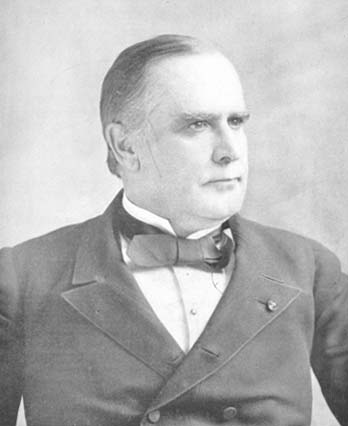The Twelfth Census: Census Day was June 1, 1900.

Authorizing Legislation
In the act authorizing the 1900 census, Congress limited census content to questions dealing with population, mortality, agriculture, and manufacturing. Reports on these topics, called “Census Reports,” were to be published by June 30, 1902. The act also authorized special census agents to collect statistics relating to incidents of deafness, blindness, insanity, juvenile delinquency, and the like; as well as on religious bodies; utilities; mining; and transportation, among others. These statistics were to be collected following the completion of the regular census. The preparation of the special reports developed from these statistics was to be accomplished in such a way so as to not interfere with the completion of the Census Reports.
The act also changed the title of the chief officer of the Census Office from “supervising clerk of the census” to “director of the census.” Additionally, a new position, assistant director of the census, to be filled by “an experienced practical statistician,” was established. The director was given the power to appoint staff based on noncompetitive examinations. However, in practice, positions were given to political referrals.
Enumeration
The Departments of War and the Navy enumerated military personnel (including those who were abroad). Indian Territory was enumerated with the cooperation of the commissioner of Indian affairs.
Hawaii, which had been annexed in 1898, was included in the census for the first time. (A census of Puerto Rico and Cuba had been carried out by the War Department in 1899. Under the direction of the Philippine Commission, a census of that territory was taken in 1903.)
Intercensal Activity
In 1902, the formerly temporary Census Office was made a permanent organization within the Department of the Interior. In 1903, it became the Census Bureau and was moved to the new Department of Commerce and Labor.
The transition from a temporary to a permanent agency was sometimes controversial. One of Congress’s goals in creating the new department was to centralize many of the overlapping statistical offices scattered throughout the bureaucracy; Census Bureau officials attempted, without much early success, to assume the role as chief statistical agency of the federal government. These aspirations were hindered, in part, by the Census Bureau’s subordinate position within the Department of Commerce and Labor.
Further Information
- A wide variety of historical statistics from this and other decades is available in Historical Statistics of the United States: Colonial Times to 1970. It is available as a PDF [74.4MB] or 2-part ZIP file: Part I [52.2MB] | Part II [66.1MB].
- Reports and statistics from the 1880 Census
- History and Growth of the United States Census: 1790-1890 [PDF 117MB], by Carroll D. Wright and William C. Hunt.
Information provided from Census.gov

